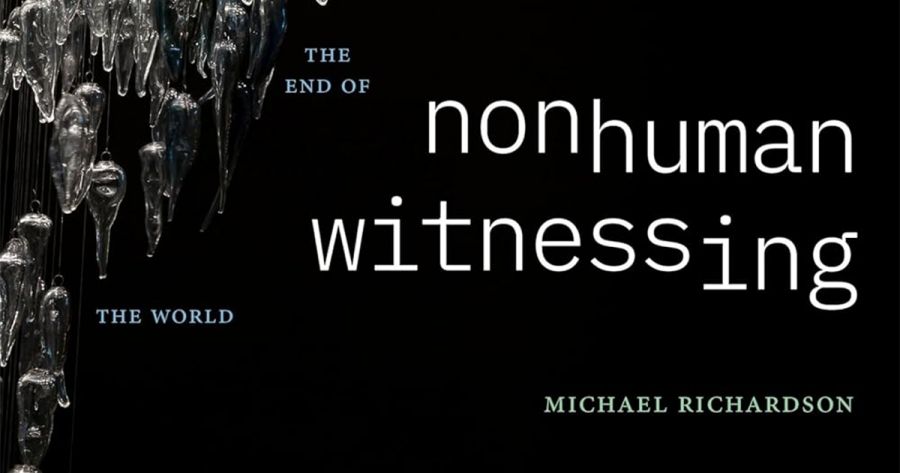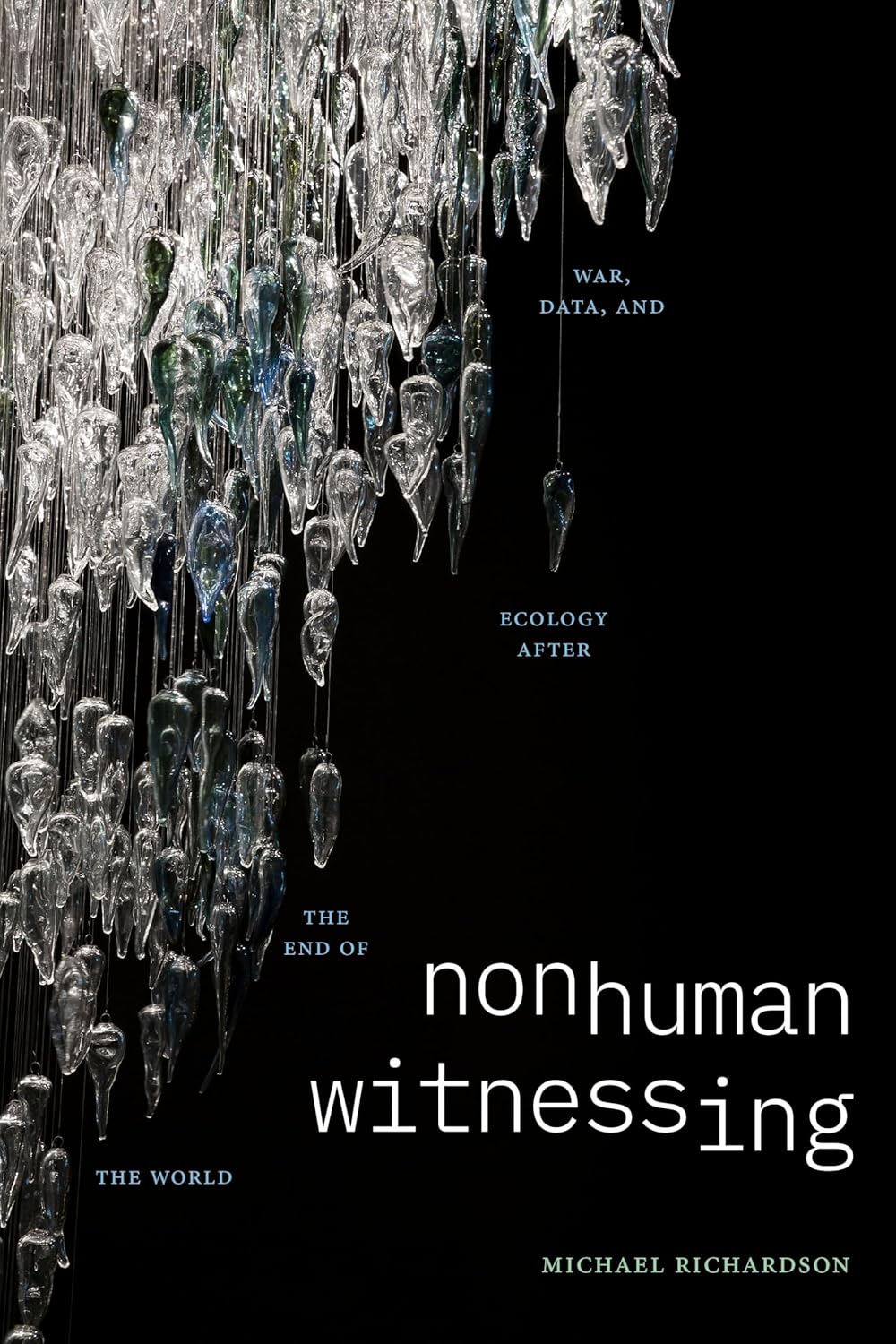
- Free Article: No
- Contents Category: Cultural Studies
- Review Article: Yes
- Article Title: Inside meatspace
- Article Subtitle: A new world of technical agency
- Online Only: Yes
- Custom Highlight Text:
In Vex Ashley’s film Machine Learning Experiments, a body – she, they, he, them, take your pick – is penetrated by a luminescent black tube. The body’s boundaries dissolve in the pleasure of becoming: animate/inanimate, human/non-human, interior and exterior, inorganic and inorganic. Backed by the steady pulse of Boy Harsher’s Augustus Muller, the series’ tripartite sequence – ‘Automation’, ‘Orgone Theory’, ‘Hydra’ (this last ‘about invading and consuming’) – offers a psychosocial exploration of transmission and penetrability of all kinds.
- Book 1 Title: Nonhuman Witnessing
- Book 1 Subtitle: War, data, and ecology after the end of the world
- Book 1 Biblio: Duke University Press, US$26.95 pb, 256 pp
- Book 1 Cover Small (400 x 600):

- Book 1 Cover (800 x 1200):

The limit point of existence – the Anthropos, the human, or the universe itself – requires the sort of humility that much of modernity and the Enlightenment have strived to escape. One thinks of John Durham Peters’s reflections on the Abrahamic tradition of testimony, in which, as Michael Richardson notes in Nonhuman Witnessing, ‘testifying has the structure of repentance: retroactively caring about what we were once careless of’. Richardson reflects upon the Maralinga nuclear tests and the art of Yhonnie Scarce, whose glass-blown objects – silica, a natural product of sand that turns to glass when subjected to high levels of heat, blown into abstract yams and other shapes – offers a lesson in non-human ways of conceptualising space and time. Rather than prop up the failing machine of humanist or posthumanist Anthropos, Scarce’s work acknowledges and works through the fact of our existing within and alongside unfamiliarity and strangeness. Her practice is not a mere representation of the horror of the atomic blasts at Maralinga, atoms dividing in an effort to cohere, resulting in atomic death, but a material rendering of atomic matter’s rupture: photons of light refracting through various media (glass-blown yam, the surveilling phone screens of viewers), all materialised as presence, ecology, glass: what Natalie Harkin dubs ‘a redaction of origins of / lives of lands // see what a breath can do’.
We do not need to domesticate or dissemble the horror of human intervention into the potentialities of the non-human here. Mapping the territory, electronic simulacra grow bigger than the map, envisioned by Jorge Luis Borges, of a country replicated in such detail it eventually became identical in size and shape to the object it was designed to represent. When AI falls, there will be no need for any human agency or senses to verify it. What are sight, touch, taste, smell, hearing if not algorithms themselves, compartmentalisations of behaviour travelling pre-assigned routes, accumulating and growing as they differentiate between sets of worldly data? As Maralinga showed, race, too, is a kind of technology: cataloguing, separating, deifying, and, yes, defil-ing. Deployed via proxy, idealisation, abstraction, fantasies of stratification and sorting, its data sets off automated algorithm(ic) processes. As Safiya Noble’s famous anecdote has it: search for ‘black girls’ on Google and porn awaits you; search for ‘white girls’ and you receive young girls at play.
Futurists and modernists have often known or anticipated an almost sexual frisson in the capacities of human enlargement and dispersal in the non-human. Encompassing everything from kink to affect, biology to compulsion, Safiya Noble’s algorithm anecdote – not to mention the fact ninety-nine per cent of deepfakes involve women being inserted into pornographic scenarios – speaks of sex and the non-human as psychic and nonmaterial affect buttressed by interventions of race, sexuality, gender, religion. Into this void rush deepfakes, Spam aristocrats, porn-in-bio bots, each denying the reality of authenticity, even as they employ fake images, fake assertions, fake algorithmic witnesses to stage truth claims. Mediation no longer commands trust.
How then do we invest in the imagistic and linguistic reality that film, photography, and journalism depend upon? Social media here encourages fragmentation, particularly in societies already struggling with cohesion. Exemplifying what Tom Sear terms ‘xenowar’, the power to compel polities toward inter-ethnic and sociopolitical conflict has also claimed truth and shared epistemic frameworks among its victims. To think of an ‘agency that can only be ascribed ethics or morality through anthropomorphic gymnastics’ is basically to draw a hexagram and pray. No humanist salvation here, only heads canvassed with pins insisting We have such sights to show you.
As Richardson puts it, ‘Machinic affect is not so much indifferent to the flesh as it is promiscuous.’ The machine is largely self-verifying, the algorithm both ‘witness and perpetrator’. It reaches out and caresses us, tells us we have never been human. (The most inhuman part of the project was insisting we ever were.) A pin-studded face may speak of unimaginable sights, but pagan visions catching up with our techno-assembled age are only the emperor’s new flesh.
The techno-social murders and acquisitions of the present mean we can finally acknowledge that, yes, there are other worlds, but they are in this one. Beneath the shadow cast by the Anthropos, where empire’s peripheries grow like moss, earth beings, ‘animacies’, fugitive subjects and speculatives, bacteria, and a new New World of technical agencies – machinic intelligence, perpetual machines – jostle and compete.
When skin caresses the tablet’s screen, we discover what real pleasure is. Rare and common metals embedded in our technology call out to the old flesh variously sanctified and reviled by Catholicism, paganism, medicine, psychiatry, whatever. All the while our fragile skinpacks run through meatspace, screaming.


Comments powered by CComment